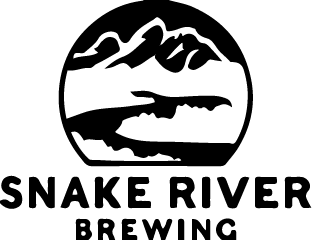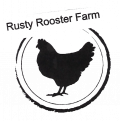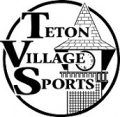Alpine Race Day
Putting on an alpine race takes many hands! A typical race needs between 20 to 25 people. Some positions require more training than other positions.
The USSA website is also a great resource for parents/community members to learn more about the what it takes to put on a race and about ski racing in general. Read the ski-racing-101 Race Day post for a brief overview about race day.
At the Start
A Starter, Assistant Starter, Start Ref, and Hand Timer are all needed to get the racers out of the gate. We have a good crew at the start that you can shadow to see what it is like! To see what is available for the current season, visit our volunteer job page.
Starter/Assistant Starter
The Starter helps the Start Referee get the start area organized and ready for the athletes, as well as breakdown after the race.
The Starter wears the headset during the race and is in direct communication with Timing to help keep the flow of the race going.
The Starter gives the start command to the athletes when they start their race run.
The Assistant Starter is the 3rd person at the start and helps organize the racers and works as a back up Starter for longer race days.
This is a great spot to be if you like/are/have:
- being with the athletes
- work well under pressure
- like being outdoors - Skis are required to get to the start.
- organized
- have good trouble shooting skills
Start Referee *USSA licensed official.
Shadowing at the start as Starter is a great way to work into this position.
The Start Referee is a non-voting (but essential) member of the Jury and is listed in the paperwork as a Jury Advisor.
The Start Referee is at the start for the entire event.
The Start Referee must be on duty during the inspection and the race. This is usually one hour prior to start and through completion of the race including any post event jury meetings.
This is a great spot to be if you like/are/have:
- detail oriented
- work well under pressure
- outdoors
- basic knowledge of finish and start timing equipment on the ground is helpful
Hand Timer
Hand timers run a stop watch and record times for each racer. This is used as a back up time if there is a malfunction with the electronic timing clocks. Skis are required for hand timing at the start.
Here is a 3 minute video I found on the Northern Division website about running the stop watches. The link also has a comprehensive document available for hand timing.
Traffic Control
Helping to keep the racers in order for their start to keep the race on time. This postition may be moved to the finish as needed at Snow King.
At the Finish
A Finish Referee and a Hand Timer are needed at the finish area of a race. To see what is available for the current season, visit our volunteer job page.
Finish Referee
Just as with the Start Referee, the Finish Referee is a non-voting (but essential) member of the Jury and is listed in the paperwork as a Jury Advisor.
The Finish Referee is at the start for the entire event.
The Finish Referee must be on duty during the inspection and the race.
The Finish Referee should be available through completion of the race including any post event jury meetings.
Hand Timer
Hand timers run a stop watch and record times for each racer. This is used as a back up time if there is a malfunction with the electronic timing clocks. Skis are required for hand timing at the start.
Here is a 3 minute video I found on the Northern Division website about running the stop watches. The link also has a comprehensive document available for hand timing.
Traffic Control @ Snow King races
Helping to keep a path for ski patrol where racers tend to leave their skis.
On the Race Course
The Head Gatekeeper and Gatekeepers all work on course and watch each racer go by their designated gates. There are different requirements for each type of race (SL, GS, SG). To see what is available for the current season, visit our volunteer job page.
Head Gatekeeper
This position requires previous training and/or experience. The head gatekeeper organizes and supervises the work of the gate judges.
This is a great spot to be if you like/are/have:
- detail oriented
- works well under pressure
- assigns gatekeepers and works with the Referee supplying gatekeeper cards
- outdoors and on skis
- works well with people
- delivers information from start, gatekeepers to race administration
Gatekeeper (Gate Judge)
The gatekeeper must be willing to work on the race course in potentially adverse weather conditions while keeping detailed track of bib numbers as well as racer movements. USSA has updated their site with a new gate judge video (posted 10-28-2016)
This is a great spot to be if you like/are/have:
- detail oriented, observe every racer that goes by following start list, but also reviewing bib number and success at navigating gate(s)
- work well under pressure
- outdoor
- have ski equipement and be able to ski down the course (except for lower gates)
- USSA license not necessary
Behind the Scenes (Indoors)
Announcer
The announcer is in the timing room reading the racer names, bib number, and finish time. You are working off of information that is on the timing computer. A strong, confident voice is necessary for this position.
Scoreboard
The scoreboard person is usually working inside (when at Snow King) but is an outside position (when at Teton Village). You will be reading times off of either live-timing website, or over a headset in communication with the secondary timer. You will usually have a crowd of athletes surrounding you which will make you feel very popular!!
Timing
The head timer is running the timing software and sending the racers on course. The head timer is in constant contact with the starter (by headset). This is a great job for somebody who does well under pressure and is detail-oriented.
The timing assistant will work with the head timer running the secondary timing clock. The timing assistant watches the course for any racers that don't finish as a second set of eyes for the head timer.
Both timers work with the hand timers (who are on the hill) syncing the clocks, as well as managing all aspects of testing the timing equipment.
The Chief of Timing and Calculations is a USSA certified position that requires a USSA membership and a timing and calculation test. The Chief of Timing & Calculations can be the head timer, but doesn't have to be. Working in the timing room is so fun, we actually have volunteers that have been doing this for 30 years!!

























































